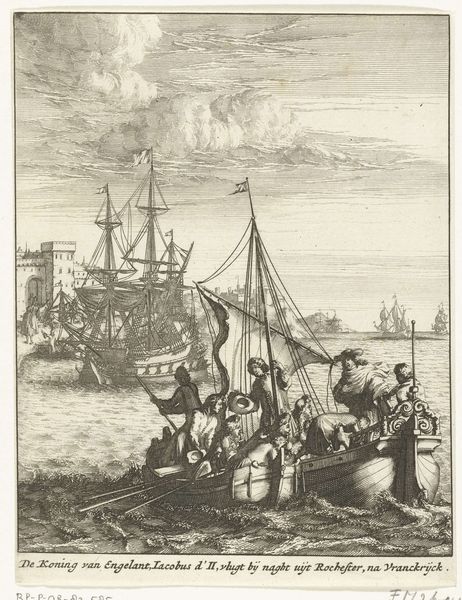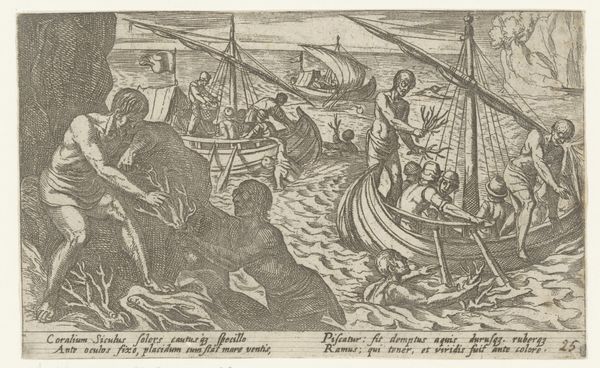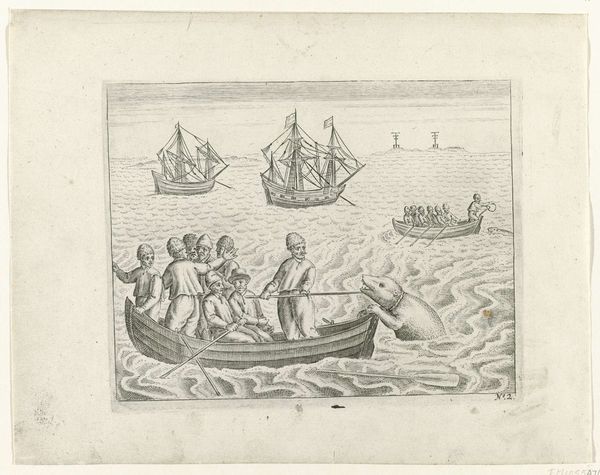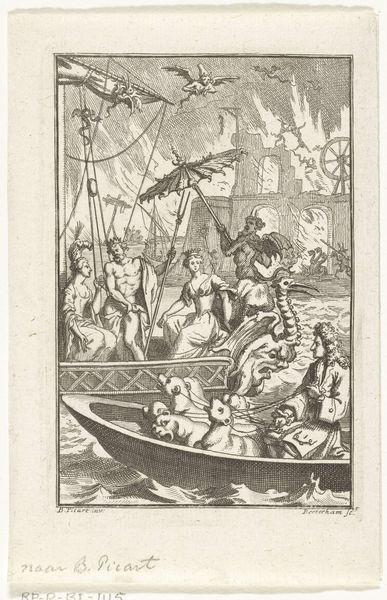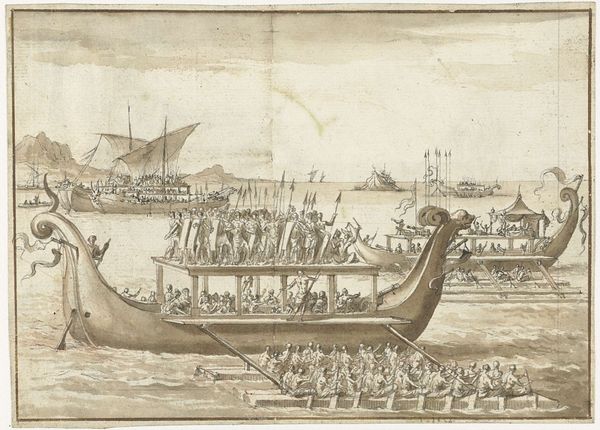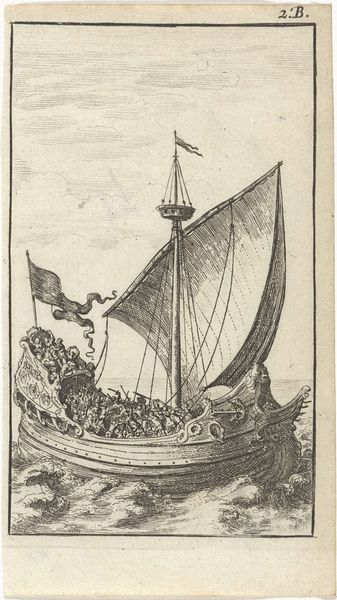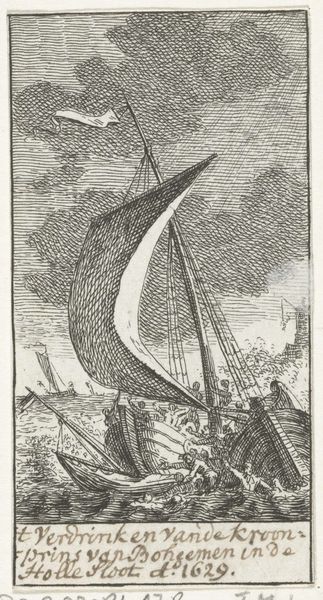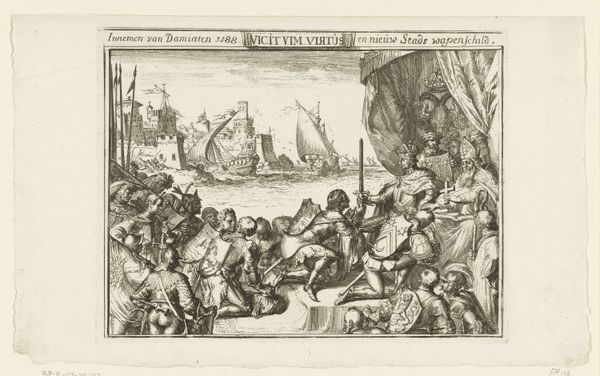
print, engraving
#
baroque
# print
#
landscape
#
figuration
#
history-painting
#
engraving
#
sea
Dimensions: height 131 mm, width 76 mm
Copyright: Rijks Museum: Open Domain
Curator: The dynamism is striking, wouldn't you agree? There's a real sense of movement despite the stillness of the engraving. Editor: Absolutely. And this is "Strijdende soldaten op zee," or "Fighting Soldiers at Sea," an engraving created around 1667 by Abraham Dircksz. Santvoort, now residing here at the Rijksmuseum. It offers a window into the maritime conflicts of the era. Curator: You see those decorative sterns on the vessels? It's intriguing how ornate these warships appear to be in this context. There is a fascinating contrast of beauty in this depiction of the struggles and tragedy that surely came with battles at sea. Editor: Exactly, those details are less about pure aesthetics, and more a conscious choice reflecting the social status of maritime power. Remember, naval battles played a key role in shaping the Dutch Republic’s identity and wealth during the 17th century. Curator: That makes so much sense; the visual vocabulary would need to communicate Dutch power. Back to form, though, observe how the engraver renders depth with such economy. The way he indicates the turbulent waves, using such fine, tight lines gives the water so much movement and dimension. It gives this small, graphic print a real monumentality. Editor: The composition definitely channels the grand history paintings, popular in the period. The arrangement, although bustling with tiny figures and so much implied conflict, directs the eye towards the distant ships on the horizon. The symbolic implication there must be about expansion. Curator: Well, I find myself completely engrossed in these tiny human dramas playing out onboard! See, here, figures reaching and yelling at each other as boats ram into each other. Editor: A reminder that behind grand historical narratives are the individuals caught within them. Curator: Indeed, the intersection of aesthetic representation and socio-political realities. Editor: It's amazing how this relatively small print can reveal so much about art, politics, and the culture of 17th century Dutch maritime history.
Comments
No comments
Be the first to comment and join the conversation on the ultimate creative platform.
